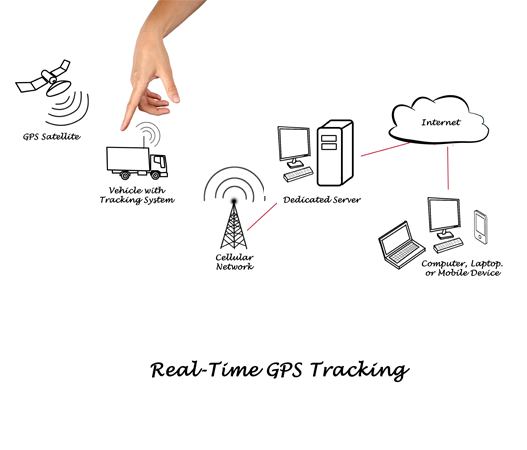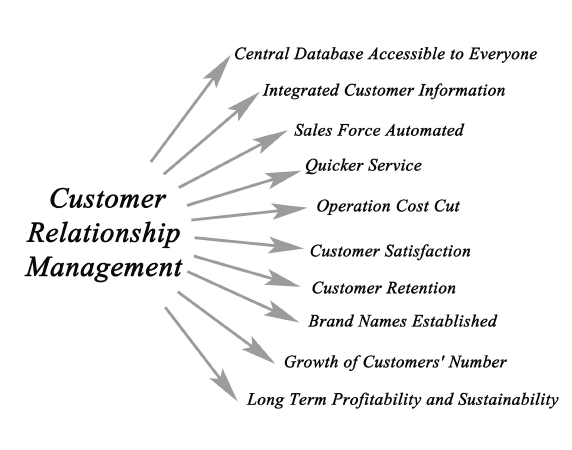Category: Field Service
We always talk about how field service companies have now become totally mobile, with top notch field service mobile solutions and devices that support it. And yes, the benefits that have accrued from the so-called phenomenon of “field service mobility”, have been massive for most companies.
But let’s break that down for a bit and see what life would be like, without mobility.
There are still a number of companies that haven’t adopted mobility. Let’s see what challenges they face.
So a regular field service organization encompasses three roles majorly – that of the technician, the dispatcher, and the service manager. Automation for all these roles essentially revolves around their responsiveness. How promptly they are able to respond to customer calls and complete service schedules, is what makes all the difference. The field agents spend most of their time out attending service calls and traveling, while the managers need to assign tasks to the technicians and ensure the timely completion of jobs.
In order for a regular field service company to do the above-mentioned jobs efficiently, there are several challenges that they go through. They are:
Non-Availability of Real-Time Information …
 Field service technicians, at any cost, need real-time information about the tasks that are assigned to them. They need to be constantly updated with any changes in tasks, inventory and also information related to the customer location.
Field service technicians, at any cost, need real-time information about the tasks that are assigned to them. They need to be constantly updated with any changes in tasks, inventory and also information related to the customer location.
They might need to make calls while executing a work order at the customer site, to enquire about stock availability at the office or availability of other parts and equipments with their colleagues nearby.
Similarly, the dispatchers also need to ensure that the right technicians are available at the right places at the right times. They need to know in real-time, where a particular technician is, what he is currently doing and what the status of his assigned job is so that they can assign jobs accordingly, leading to faster and more efficient attending of customer calls.
Leading to Reduced Productivity and Efficiency …
 The field service technicians, at the end of the day, need to report their work to the main office. In a paper-based reporting system, the technicians need to take down all the nitty gritties of their work, including any material or labor expenses incurred at the site, on their service sheet, and it might take days to get invoiced.
The field service technicians, at the end of the day, need to report their work to the main office. In a paper-based reporting system, the technicians need to take down all the nitty gritties of their work, including any material or labor expenses incurred at the site, on their service sheet, and it might take days to get invoiced.
Apart from this, the technicians may not always get the exact location information for their clients, in which case they might need to contact the customer for more details through call or email.
Furthermore, on the absence of any kind of service history for a particular client, it may be difficult for technicians to address issues arising for the same client or even similar clients.
And in Turn – Low Levels of Customer Satisfaction
 As more or less an implication of lack of real-time information, customer service calls may not be promptly addressed or responded to. Moreover, due to lack of service history or information on stock levels and the like, the technicians may take more than a single visit to solve customer issues. All of these have a negative impact on customer retention.
As more or less an implication of lack of real-time information, customer service calls may not be promptly addressed or responded to. Moreover, due to lack of service history or information on stock levels and the like, the technicians may take more than a single visit to solve customer issues. All of these have a negative impact on customer retention.
Manual and paper-based work reporting can also lead to delays, not to mention errors, upon redundant manual entry of important information. Poor organization of work on the whole, can be a total turn-off for customers, amounting to their dissatisfaction.
As a result of low productivity and reducing customer satisfaction levels, the profits take a serious hit as well.
The traveling costs may rise because of the repeated visits to the customer site.
Duplication of efforts in work reporting can lead to increased overtime. It can also lead to delayed and inaccurate invoices from errors creeping in; all leading to further losses.
So now you know just how important technology and mobility is in field service. Contact us to get these issues resolved.
What are some of the issues that you have come across in your field service business?
We would like to hear.
Stay up to date on what's new

Featured Blogs
Stay up to date on
what's new



Talk To Our Experts
How an American was able to achieve his dream of extending pet care services across the globe.
One of life’s most enriching and delightful experiences is owning a pet. An animal that you nurture and take care of all its life – it is definitely a never ending source of happiness and love.
Pet care is a rapidly growing business, with the U.S of course, leading the sector having the world’s highest number of pets. Pet pampering is increasingly becoming the norm, which is something that goes beyond simple taking care, feeding and grooming. People are ready to pay a premium for high-quality pet products and services because pets are considered a part of the family.
As part of the pet care industry, there are several companies that provide pet care services to pet owners. Here we discuss one such company, K9 Experts, that used technology to manage its pet walking business in an efficient and effective manner.
An ardent pet lover Mr. M, runs K9 Experts headquartered in New Jersey. He has always been very particular about taking care of pets, just like any other American. He wanted to help others with their pets and hence started by working for a pet care company. Now he owns one.
The Challenge
M. always wanted to start a pet care business of his own. While working for a pet care company initially, he had been using a certain kind of application, which he found a little inefficient. There were still many areas of the business that the application did not cater to, and hence remained unautomated. He was looking for a better, more advanced pet care solution for his new business; one that completely eliminated all the challenges that he faced with the application that he was currently working with. What he basically needed was a one-stop solution for pet owners, to take care of their pets world over, in a hassle free way and he had a specific set of requirements for it too.
The Solution – Tracking Paws
He found the perfect solution in full-fledged feature rich web application developed by Fingent Technology Solutions called “Tracking Paws”.
![]() Tracking paws had a number of unique features, that helped him overcome all the limitations of his existing pet care application. Some of them were:
Tracking paws had a number of unique features, that helped him overcome all the limitations of his existing pet care application. Some of them were:
- Due notifications and alerts, not just for the customers, but for the staff and the business partners to enable effective communication
- Geolocation features enabling customers to view and track where their pets are being taken for walks, ensuring sufficient transparency
- QR code enabled starting and ending of services making it easy and quick for the customers
- History of service activities for customers and the service staff, contributing to more transparency
- Interactive maps and photo uploading features, all meant for a richer customer experience
All of these features were focused on providing a transparent and reliable portal for customers to take care of their pets, and thereby earn their trust and loyalty.
M was able to successfully start his new pet care business, with “Tracking Paws” and hence fulfill his vision of helping people take good care of their pets. With Tracking Paws, he saw almost a 20% improvement in his overall business, within the first few months of deployment. The user-friendly nature of the application was an added advantage, making Tracking Paws more popular among his clients. On the whole, it allowed M to keep ahead in the pet care business with sufficient support from his growing customer base.
Are you looking for an efficient application to solve your business challenges, just like M? Talk to our team of experts! We can help you develop a custom software solution specifically suited for your business to realize all its goals.
Stay up to date on what's new

Featured Blogs
Stay up to date on
what's new



Talk To Our Experts
How did Nokia – a once leading mobile manufacturer, fall behind in its market and have to struggle from then on, to come up again?
How did the mighty British Petroleum company have to deal with a severe environmental crisis, which went on to become a major PR crisis as well?
The answer to both these questions is “poor communication” or a lack of effective communication. The first silent killer of your business!
According to a detailed analysis of what went wrong with Nokia, and why it is struggling now to convert its many good ideas into successful products, their major problem lies in their habits of communication. They sat through several, pointless strategy discussions over clearly cut out plans about introducing new phone models in the market.
As for British Petroleum, their 2010 Deepwater Horizon Offshore Oil rig disaster, was largely due to “poor communications” and a failure to “share important information”, as per a report on the White House Commission.
These examples show just how important having an effective communication system is in any organization, especially in the field service industry.
Lack of Proper Communication affects Employee Morale
 Information has to be conveyed to the right people at the right time, whether it is an email to the manager, or a phone call to postpone the date of an order. Irrespective of the severity of the miscommunication, it will definitely drain the productivity and efficiency of an organization.
Information has to be conveyed to the right people at the right time, whether it is an email to the manager, or a phone call to postpone the date of an order. Irrespective of the severity of the miscommunication, it will definitely drain the productivity and efficiency of an organization.
Besides that, lack of proper communication can affect employee morale. A collaborative and communicative work environment can boost employee productivity and promote creativity. On the contrary, poor communication can lead to lack of enthusiasm in doing assignments and hinder innovations.
“The effectiveness of communication depends on the relevance of the message, the time it is conveyed in, the person it is conveyed to and the means or method through which it is conveyed.”
Managers and leaders who can effectively manage the flow of communication in an organization, know, that they need to follow a certain set of practices and communication methods – ones that enable them to get closer to employees. They engage employees by encouraging them to take active part in the communication process. They also make sure that their communication efforts are in alignment with the organizational strategy.
The Second Silent Killer
The average American office worker is said to be using around 10,000 sheets of paper on an annual basis. That is to say, if your business has around 20 field representatives and 5 back office managers, that’s 250,000 per year. That’s a rough base for how much your business would be spending on paper every year, not to mention the printing costs as well. The average cost of printing a page comes to over three cents, so you can do the math right?
Apart from these, there are the storage costs. You need to store all of these documents, in an age where filing cabinets are expensive and take up valuable office space too.
Yes! Excessive paperwork could be the second silent killer of your business.
Several surveys have in fact revealed that switching from paper to electronic forms allows business owners to concentrate more on their revenues, as their entire organization spends much less time handling physical documents. On an average, making forms electronic apparently saves about 11 hours of work time per week for employees and about six hours for business owners.
 Imagine the time that could be saved and used for doing more important work, that your field agents usually spend doing paperwork?
Imagine the time that could be saved and used for doing more important work, that your field agents usually spend doing paperwork?
Apart from consuming time, manual paperwork can lead to errors, misplaced or missing sheets or forms and inaccurate reporting, all causing undue issues in your business. Unsatisfied customers and staff can in turn, affect your profitability and business position.
Go Digital!
If your business relies heavily on paperwork or has issues with poor communication, it’s time to change. Go digital. That said, spreadsheets or excel aren’t the proper automation tools, not even for small sized businesses most of the time. If your employees spend over 4 hours daily managing excels for multiple processes, it’s time for you to move into a software solution to automate those. The solution can either be an advanced free tool or custom software according to your preferences.
Finding the perfect digital automation solution for your business involves a lot of calculations and considerations, for which you might want to seek help from experts. Should you feel the need for the same, our experienced automation professionals can help provide the right advice plus the right solution for your business processes.
Stay up to date on what's new

Featured Blogs
Stay up to date on
what's new



Talk To Our Experts
Your field service technicians are the pacesetters of your business. It is the effort and dedication that they put in their work that reflects as satisfied customers and improved revenue for your business.
Now don’t you want to make their work easier and more efficient?
Companies that have invested in mobile technology for their field service workers in the past have found more success than their counterparts in the industry. And up to 66% of field service companies currently use an automated field service solution, out of which a major 41% have a mobile based one.
Adopting an efficient and effective field service app (one that is right for your business too – How to Select the Perfect Field Service Automation Solution for your Business), can actually empower your technicians and help them to increase their productivity, thereby resulting in improved service delivery. As a result, this increases customer loyalty and satisfied customers tend to buy more/do more business with you, thus guaranteeing repeat Business.
Here are 8 reasons why your field service technicians need a good field service mobile app:
 Skip filling out timesheets once and for all – Paperwork is something that we all dread. Filling out time and job sheets at the customer’s site is not just frustrating but time-consuming for the technicians. A good field service mobile app will allow your technicians to record easily, all aspects of their job like the time spent at the site, parts, and tools used for the job, and follow-up required for the job, if any.
Skip filling out timesheets once and for all – Paperwork is something that we all dread. Filling out time and job sheets at the customer’s site is not just frustrating but time-consuming for the technicians. A good field service mobile app will allow your technicians to record easily, all aspects of their job like the time spent at the site, parts, and tools used for the job, and follow-up required for the job, if any.- Avoid confusions – And by confusions, I mean about everything from the location of the customers to the skillset required for the job. The dispatchers get to see where exactly their field technicians are, what each of their job statuses is and the like through mobile apps, and can assign jobs accurately based on their availability, proximity or even skills. The technicians, automatically receive updates on their job assignments including location, issue and contact details in real-time. With the help of an in-built GPS, they can devise the most efficient route to the site too.
- Figure accurate job estimates and quotes instantly – Technicians can quickly work out the costs for the job, and inform the customer about the exact cost along with other details on what the problem is, what needs to be done and how long it will take to complete the job.
 Keep accurate track of inventory – A technician in urgent need of a particular part or tool can immediately look it up on his mobile device, and place order. He is always informed about the inventory available, and when in need he knows where to find it.
Keep accurate track of inventory – A technician in urgent need of a particular part or tool can immediately look it up on his mobile device, and place order. He is always informed about the inventory available, and when in need he knows where to find it.- Eliminate redundant and incorrect data entry – As against the old-fashioned paper-based system of reporting, technicians do not have to take down job details while at the site and re-enter it back in office. They can record data right from the customer’s site and it gets reported in office in real-time. It also means there are lesser chances for errors and lesser frustration trying to read illegible handwriting.
- Communicate effectively with customers – With the help of photos, customer signatures, inspections and other such app-integrated capabilities and their backups, communication with the customers is always effective. There are much lesser chances for miscommunication as all aspects of even past jobs can be retrieved easily.
- Improve customer perception – Customers generally tend to find companies that use the latest and most convenience boosting technology, to be modern. The trust factor is also on the higher side. Hence, technicians can improve the trust factor by answering all of the customers’ questions, and providing accurate calculations with the help of service and equipment history.
 Improve overall team communication – Field service mobile apps help keep the entire team connected at all times. The technicians can easily reach the office, their supervisor or even their colleagues for any kind of communication or urgency at any time.
Improve overall team communication – Field service mobile apps help keep the entire team connected at all times. The technicians can easily reach the office, their supervisor or even their colleagues for any kind of communication or urgency at any time.
Help your field service technicians grow by equipping them with efficient mobile apps. You will be not just doing them a favour, but your whole company benefits as well.
For more insights on field service mobile apps, take a look at our insights or talk to our experts.
Stay up to date on what's new

Featured Blogs
Stay up to date on
what's new



Talk To Our Experts
The field service industry, as we all know, is at the peak of its transformative stage now. The technological advancements in the industry have been coming on, one after the other for the past few years, and now the rate of the revolution has reached an all time high.
As new tools and technologies continue to take over the field service market, let’s take a look at some of the major trends for the year 2016 and beyond.
- Predictive Maintenance – Last year, we saw the expansion of the Internet of Things as well as a more widespread use of analytics tools to handle all the big data. From this year on, it is time to put those tools to real use, and enhance the predictive capabilities of all connected devices. That way, a more predictive or proactive approach to service can be taken up, along with automation. For example, sensors could be fixed on equipments, and devices, that can notify its users when it needs a repair or when it is due for its regular maintenance. Thus, the whole process becomes automated, as it provides enough insight to the service providers to serve customers, without having them make a service request or call.
 The Internet of Everything – The Internet of Things isn’t exactly a new trend to look out for in 2016, but we will definitely see an increase in its adoption by businesses in various industries, making it sort of an established industry best practice. According to Gartner, there are going to be about 26 billion devices, apart from smartphones, tablets, and computer systems, that are connected through the Internet of Things by 2020. Hence, the range of devices through which people are connected is getting bigger, which is exactly what the field service industry needs. The field service technicians need to be connected with the main office, with their colleagues, with the equipments used in the fields, as well as with their customers in real time. Information captured in the fields, with the help of such intelligent connected devices can then be used further, in predictive maintenance practices too.
The Internet of Everything – The Internet of Things isn’t exactly a new trend to look out for in 2016, but we will definitely see an increase in its adoption by businesses in various industries, making it sort of an established industry best practice. According to Gartner, there are going to be about 26 billion devices, apart from smartphones, tablets, and computer systems, that are connected through the Internet of Things by 2020. Hence, the range of devices through which people are connected is getting bigger, which is exactly what the field service industry needs. The field service technicians need to be connected with the main office, with their colleagues, with the equipments used in the fields, as well as with their customers in real time. Information captured in the fields, with the help of such intelligent connected devices can then be used further, in predictive maintenance practices too.
- Better Integration – As an implication of the “Internet of Everything” phenomenon, there is going to be an exponential increase in productivity and efficiency over the next few years. As mobile devices, equipments, telematics, and the offices are connected and integrated with field service solutions, there can be more chances or opportunities to work closely and communicate more effectively. A custom field service software will be the right way to go about it.
With the help of vehicle tracking, scheduling and routing facilities on mobile devices, field service technicians can take decisions in real-time remotely. It also helps them avoid issues related to reckless driving, control maintenance costs etc., all from a handheld device. All this besides the regular utilities like access to customer history and billing information, location information of colleagues and the like.
- Mobility all the way – We will see most field service companies embracing mobility in the years to come. Field service solutions will take different mobile forms like tablets and smartphones, customized to suit the different business models of companies. Here are some of Gartner’s predictions for 2016 and beyond:
– About 40% of the field service workforce will be mobile
– More than 65% of the mobile workforce will have a smartphone
– Field service organizations will buy up to 53 million tablets in 2016
- A Single Provider – Along with modernization and further technological developments in the industry comes an increasing trend of relying on a single provider for all the functionalities required for work. Most companies entrust a single company to deliver the software and skills to manage their work, employees, and assets. This calls for comprehensive, robust as well as flexible platforms supported by strong providers.
What other trends do you think can be added to this list? Share with us in the comments below. Let’s discuss.
Stay up to date on what's new

Featured Blogs
Stay up to date on
what's new



Talk To Our Experts
Field service businesses are trying to capitalize on the advantages offered by today’s technologies. Mobile technology, being the most significant among them, has taken the industry by storm, offering increased productivity gains, streamlines work processes, improved field agent communications, increased first-time fix rate, shortened billing cycles, reduced overhead of paper-based field service management and so on. The infographic puts together some recent trends, impacts and state of mobile technology in Field Service Businesses.
Interested in learning more on enabling your field team with mobile technologies? We’d love to know your business requirements and help accordingly, contact our specialist team now.
Share this Infographic On Your Site
Stay up to date on what's new

Featured Blogs
Stay up to date on
what's new



Talk To Our Experts
Did you know that there are more than 8 million Uber users in the world? It is available in over 400 cities and almost 68 countries, and it is still growing.
Why do you think it is one of the most preferred taxi services?
Because it sends a car to your doorstep up to 2 times faster than a regular taxi service.
Similarly, Bizzy is another popular application that shows you where your friends have had dinner lately and also their recommendations.
What is common among such popular apps?
The Geolocation feature. Yes! It is the next big thing in a lot of industries, influencing not just consumer habits, but also the enterprise, more dramatically – in the field service industry.
It started off with cloud computing allowing employees of an enterprise to work mobile, from wherever they want, while still staying connected to office. Now, with geolocation, the transformation in the field service industry is more real and significant.
Considering how field service has always been an industry run on clipboards, spreadsheets and the like, cloud-based mobile solutions have indeed brought a substantial change in work efficiency. Earlier, technicians only had a little more than a phone, to connect with their main office. Now, with the advent of smartphones with built-in GPS capabilities, the field service industry can leverage the power of real-time geolocation services.
Here are some ways in which geolocation is revolutionizing the field service industry:
- Real-time tracking of location – This is one of the more obvious benefits of the geolocation feature. It allows the dispatchers to say exactly where their techs are, analyze their transit to see if they are stuck on the road, track the status of their task, plan their breaks etc. On the whole, it allows dispatchers to assign and reassign jobs according to the technician’s schedule.

- Performance management – As an extension of the above advantage, dispatchers get to know how much work and how well, their technicians are performing. They also get to see how many breaks they take, how long they break, whether they make early starts or end shifts early etc. This way they get to analyze and manage the performances of their field technicians effectively.
- Effective labour billing – Accurate tracking of worker timings leads to an automatic log of arrival and departure times, allowing for effective labour billing.
- Better communication – Geolocation put together with cloud services can benefit the customer too in huge ways. For example, a text or an alert can be automatically sent to the customer, when the technician is reaching the location or is exactly 15 minutes away from the location of service. Better scheduling leads to better insights for the dispatcher about creating more realistic timelines.

- Better collaboration – When on duty, if a service technician finds himself short of essential parts or tools, geolocation helps to track other technicians who may be nearby, from whom the shortage can be compensated with. Their inventories can be synced too so that it would be easy to identify who has the required tools and connect with them on the fly. This way, the job can be completed on the same day, rather than the customer having to reschedule the entire job. More like smart work!
- Efficient driving – Geolocation helps to analyze driving routes and give updates to technicians about traffic and weather issues.
Geolocation thus helps in incorporating more transparency and accountability into the business, leading to faster service delivery and in turn an improved bottom line.
What other benefits do you think can be added to this list? Let us know in the comments below.
Stay up to date on what's new

Featured Blogs
Stay up to date on
what's new



Talk To Our Experts
We now live in the midst of what is called the “on-demand” economy, which always gets us pizzas and taxis on time, right at our doorsteps. The same phenomenon also calls for field services to be “on-demand” and “real-time” as well, making it necessary for field service companies to embrace mobility and provide faster turnaround times than before.
As a matter of fact, mobility is something that is slowly becoming mainstream in most business enterprises and industries. Mobile devices are no longer seen as a distraction, instead, they are embraced for their potential to provide better customer satisfaction through faster service delivery while in the field.
However, a good number of field service companies are still hesitant in adopting mobile solutions, due to a number of reasons like lack of in-house IT expertise or a low ROI. Moreover, change, as we know is not always welcome. According to the Aberdeen group, about 48% of field service organizations are resistant to changes.
If you are one of those companies, that still haven’t gone mobile yet, it is high time you did something about those barriers and embraced mobility. Here’s why:
Immediate problem-solving
Customers these days, want things installed, fixed or want their problem to be solved immediately. They don’t want to have to wait days and weeks for their issue to be addressed.
For field service agents, access to instruction manuals, troubleshooting guides, and real-time data availability lets them meet ever decreasing SLA times. These help in diagnosing and fixing a problem right the first time. This can be especially useful for trainees or new joinees.
“69% of best-in-class organizations make use of mobile devices to equip their field service team with access to remote experts and their peers.”
Improved customer service
In today’s business environment, it goes without saying how critical customer service is. It is the tools that businesses invest in, that help in improving services to customers.
And that is why going mobile is the right thing to do, to encourage technicians to perform better and differentiate themselves from their competition.
Customers these days expect great customer service on top of completing service calls and fixes on time. Technicians are often seen as customer service agents, and not just engineers. For example, in the event of a customer not being able to be on-site while a technician is fixing a broken machine, mobility can be used to inform the customer on fulfillment of the Service Level Agreement (SLA). Such real-time updates to service delivery provide greater transparency as well.
Apart from these, a well implemented mobile strategy can be beneficial for the entire organization and not just the field service technicians. A proper mobile strategy can be formulated with the IT department as well, and have processes aligned to it so that the overall functioning gets streamlined.
Moreover, mobility leads to not only happier customers but also happier employees or technicians, their work becomes much easier. If you haven’t gone mobile yet, now is the time to switch from paper-based systems, and give a chance for your technicians to deliver better performance.
Source: Field Service News
Stay up to date on what's new

Featured Blogs
Stay up to date on
what's new



Talk To Our Experts
The field service industry is rich with technology these days, equipping field service technicians with all the right tools to improve their productivity and efficiency. Especially with mobility being mainstream, field representatives are able to be much more effective in their field today, than they have ever been before.
So how do mobile field service solutions help to create a huge impact on customers and eventually improve profits?
Only the right requirements
A field service mobile app that has only the necessary features and requirements will be more effective than one which is overloaded with features.
For example, a lot of companies make the mistake of creating a mobile replica of their CRM for their field service app. Now, this is a bad idea, because first of all, it would be quite an extensive project, not to mention the complexity and costs involved.
Secondly, a copy of the entire database of the company’s customers is not really something that a field representative would need for his work.
Here are some of the most effective features that can be included in a field service mobile app:
- Centralized work order scheduling and tracking – Being able to view and keep track of all work orders from a single easy-to-use dashboard is one of the most important features of a field service mobile application. It helps the managers monitor work orders as well as the progress made by the field workers, thereby enabling them to make better and faster decisions.
- Priority wise notifications –
 Considering the busy schedule of field workers, it is practically difficult to keep checking their mobile apps for any tasks that need to be completed. This may also cause delays in tasks being seen and hence increase in completion time. Hence, it is important to have an automated status update feature, which prompts the field worker for every new work assigned, and allows them to accept it or reject it too so that it can be reassigned to the next worker.
Considering the busy schedule of field workers, it is practically difficult to keep checking their mobile apps for any tasks that need to be completed. This may also cause delays in tasks being seen and hence increase in completion time. Hence, it is important to have an automated status update feature, which prompts the field worker for every new work assigned, and allows them to accept it or reject it too so that it can be reassigned to the next worker. - Geolocation – Geolocation helps to track and identify the location of the field workers, according to which the dispatchers can assign and reassign tasks.
Take a look at our blog 5 Key Features That Maximize Efficiency of a Mobile Field Service Application to know more.
Forms and questionnaires
 Field service representatives might need to collect a lot of information while they are at their site, which they might need to enter into their systems, once they are back in office. This can be avoided with the help of a mobile app, as it contains different electronic versions of feedback surveys, questionnaires and the like. The information can be directly entered into the app right in the beginning, and it gets automatically uploaded into the CRM system, which can then be used by field service representatives as well as the marketing department for their analysis.
Field service representatives might need to collect a lot of information while they are at their site, which they might need to enter into their systems, once they are back in office. This can be avoided with the help of a mobile app, as it contains different electronic versions of feedback surveys, questionnaires and the like. The information can be directly entered into the app right in the beginning, and it gets automatically uploaded into the CRM system, which can then be used by field service representatives as well as the marketing department for their analysis.
The right hardware
An enterprise field service mobile application, fit into a 4 or 5 inches mobile screen, may not be the best of ideas. Not only is it quite a task for the UI developers, it also makes job for field technicians more difficult, as they definitely need more space to make the best of the app features. Tablets may be more ideal for tailoring mobile field service software. About 8 to 10 inches of space, may be more convenient for field technicians to scroll through their app and utilize its features, especially filling forms and questionnaires.
Different kinds of information can be best displayed in different kinds of hardware or devices, like tablets for forms, mobiles for updating and retrieving information and the like. Hence, the right hardware can make a huge difference.
Taking care of these points can help you make the most out of your mobile field service software, and increase the efficiency of your field service workforce. It also helps you better manage them.
Talk to our field service management experts to create an effective field service management solution for your business.
Stay up to date on what's new

Featured Blogs
Stay up to date on
what's new



Talk To Our Experts
The abundance, low cost, ease of use and ubiquity of smartphones/devices and mobile networks has brought revolutions among the different industries, in the ways they sell and operate. Earlier, mobile apps were only a means to make customers engage with and experience brands, mainly to market businesses. However, with the consumerization of IT, businesses not only aim at providing better customer experience through business-to-consumer apps (B2C), but are also focused at empowering their employees, making them more productive and exhibiting a smart work-environment through business-to-employee apps (B2E). Especially, businesses that are out there in the field.
Field service is one among those industries which is heavily impacted by this mobilization and consumerization. The industry has developed immensely over the last few years with several intelligent automating software, field service management apps, and technologies like wearables, video conferencing, IoT and more.
Increased sales with field service software deployment
“When it comes to appealing the ever-so-intelligent-humans, it’s no more about conning ads, fraudulent links, deceiving looks or false results; rather it’s all about intelligent tech offering them a better experience.”
Field service software has been by far the most disruptive tech that took the field service industry by storm. It brings home several advantages, like easy job scheduling, work order management, tasks automation, customer data access, transparent stock visibility, increased customer relationship management, decreased cost and time and more. And as far as sales is concerned, dealers across a variety of industries like, telecommunications, heating and air conditioning, medical, security and the like, testified that implementing a field service management system increased their equipment sales around an average of 12% in the very first year.
Take a note; it’s a 12% increase, just by using something that is already crucial to your business operations.
Not convinced?
See below for signs supporting how field service software increase sales.
Field service apps provide good customer service, thereby creating customer loyalty and better sales opportunity

According to the Harvard Business Review (HBR), businesses will experience a 100% customer retention rate when they are “very satisfied” with a business’ service. And a mere increase of 5% in customer retention and loyalty increases the business’ profit by 75%.
When your field service management software provides amazing service to customers, it could be one good reason why your sales has increased, because they are delighted and will continue to purchase new parts and services from you.
Anticipating a customer’s need buys his trust factor

“Who doesn’t like the feeling that the seller knows them, understands their needs and wants to offer them the best they can get?”
Ever noticed those online ads you see, set to display based on your interests and priorities? The sites recognize your preferences and present personalized collections to you even before you realize what you actually need. Who doesn’t like the feeling that the seller knows them, understands their needs and wants to offer them the best they can get?
Field service businesses can use the same principle to engage their customers by offering personalized services and make them feel that their needs are well-understood and taken care of. Technicians can use the field service management software to pull up the customer’s data or history, to evaluate and anticipate the deeper needs of their client. This detailed info about the client and their business help agents to provide personalized services and upsell intelligently, making the customers feel comfortable.
“Customers are likely to buy (and recommend to others) additional products and services that the agent will suggest, if they have trust that the agent onsite knows their best interests.”
Productive technicians tend to complete more jobs and additional customer visits

With advanced features of smart scheduling and dispatching (getting the right technicians at the right place, on time, with the right parts) in field service management software , technicians are able to get to more jobs than they would, without it. With complete customer info (including contact, location, and on-site equipment), proper directions to customer’s site, photos, videos, equipment service history, technical manuals and more details available right at the technician’s fingertips, they can always do an additional job or visit more customers almost every day.“By empowering field service agents through such smart field service management apps that increase their productivity (to up to 14%), you’re essentially multiplying your sales force and increasing their selling opportunity by up to 14%.”
Real-time access to real-time information leverage faster sale processes
 Technicians have better cross-selling and upselling opportunities because the apps allow quick access to details on products, services, add-ons and customer’s interests. If a customer has a requirement/is interested in a solution, the field service agent can immediately suggest a solution. He can show its sales materials, explain to the customer and create a quote for it instantly though his field service software (with appropriate discounts and reductions). Now, if the customer likes the solution and is satisfied with the quote, he can immediately give his consent through electronic signature capture. The entire sales process- from the myriad emails, calls, appointment schedules, to scenarios like canceled meetings and re-doing tasks, is thus trimmed down significantly.
Technicians have better cross-selling and upselling opportunities because the apps allow quick access to details on products, services, add-ons and customer’s interests. If a customer has a requirement/is interested in a solution, the field service agent can immediately suggest a solution. He can show its sales materials, explain to the customer and create a quote for it instantly though his field service software (with appropriate discounts and reductions). Now, if the customer likes the solution and is satisfied with the quote, he can immediately give his consent through electronic signature capture. The entire sales process- from the myriad emails, calls, appointment schedules, to scenarios like canceled meetings and re-doing tasks, is thus trimmed down significantly.
Faster resolution times for customers
 Customers like services to be quick. For instance, they wouldn’t bear the heat and wait for you to check with your dealer if a replacement part for their malfunctioning AC is available at their warehouse, nor will they wait until the parts become available and the service is ready. They will simply ditch you and go to another provider who can complete the maintenance in much lesser time.
Customers like services to be quick. For instance, they wouldn’t bear the heat and wait for you to check with your dealer if a replacement part for their malfunctioning AC is available at their warehouse, nor will they wait until the parts become available and the service is ready. They will simply ditch you and go to another provider who can complete the maintenance in much lesser time.
A mobile field service application that has parts and inventory management function, not only keeps track of what is on your truck but also has details of what’s on other trucks in your vicinity and warehouse. If a particular replacement part isn’t available, you can instantly order it from where it is available, through the app. Thus, the services can be completed faster than those businesses, which need to place a hundred calls before getting the work done for customers.
Customers tend to choose secure providers over others
 Businesses using field service apps that can send the agent’s information, like photo ID, arrival time and identification card to clients give an added sense of security, and clients tend to buy more (and recommend to others) of their services.
Businesses using field service apps that can send the agent’s information, like photo ID, arrival time and identification card to clients give an added sense of security, and clients tend to buy more (and recommend to others) of their services.
It’s true that businesses do not often shortlist field service management software to increase their equipment sales. But as you saw above, those who have encouraged its use have definitely drawn more sales, revenue, and profit.
Stay up to date on what's new

Featured Blogs
Stay up to date on
what's new















